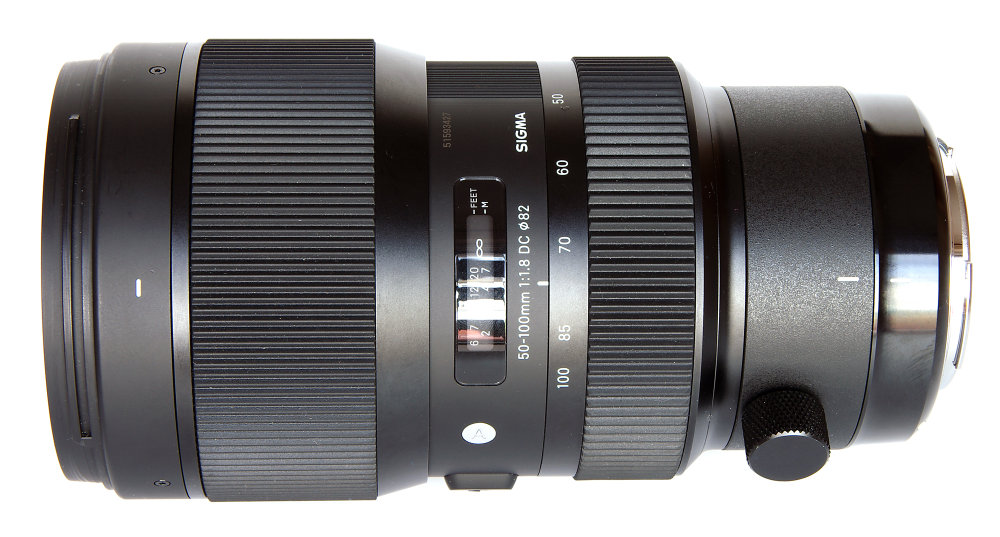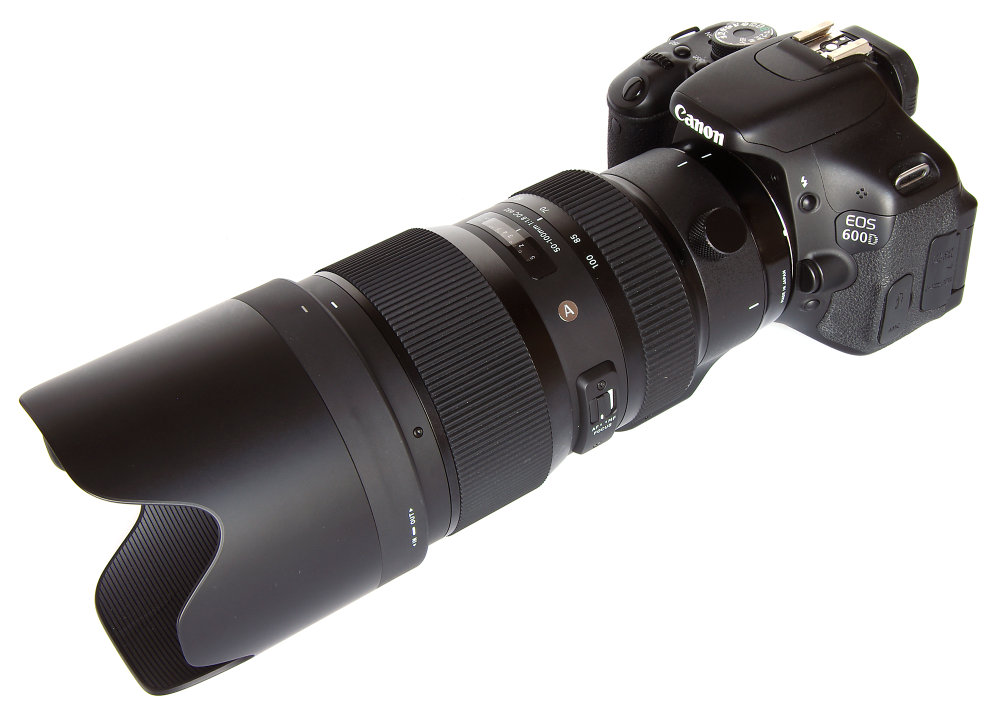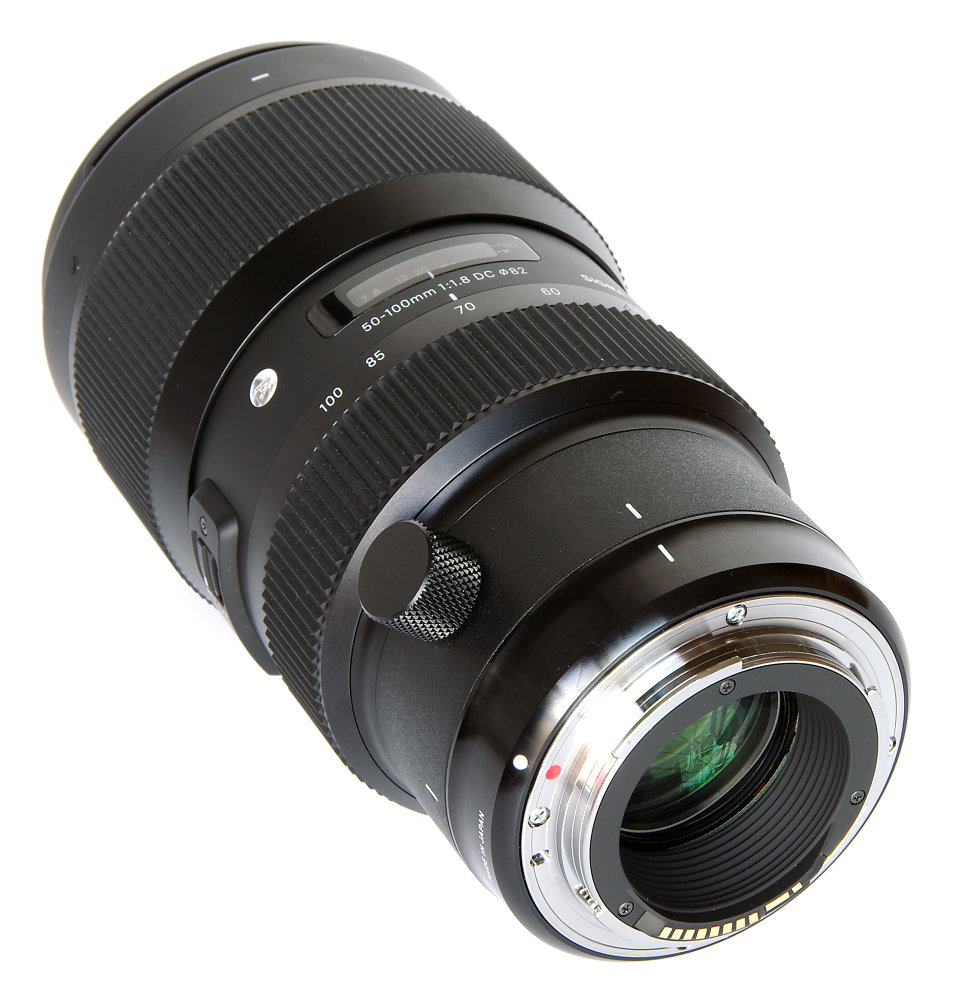Sigma 50-100mm f/1.8 DC HSM Art Review
Sigma 50-100mm f/1.8 DC HSM Art Handling and Features
For the purposes of this review, the lens was matched with a Canon EOS 600D body, a combination which offers good balance in the hand. The rotating tripod collar is placed at the centre of gravity and offers a secure attachment, plus the ability to quickly move from landscape to portrait format. Mount options are available for Nikon, Canon and Sigma and the lens is also compatible with the MC-11 adapter for Sony FE cameras, at least in its Canon and Sigma versions. If we change our mind at some point, Sigma offers a mount changing option so a change of system need not mean changing all our lenses.
Forward of the tripod collar is the zoom ring, which is nicely damped, firm in operation but smooth. Moving on towards the front of the lens we find the AF/MF switch and the distance scales. The latter are located under a reasonably sized plastic window and values are offered in both feet and metres. Focusing is down to a minimum distance of 0.95m (37.4”), which equates to a maximum magnification of 1:6.7. This is reasonable, but not as close as we have become used to with many lenses. Closer focus would have been a benefit. The lens does not rotate or extend during focusing or zooming as these functions are carried out internally.
The manual focus ring is very generously sized and has positive end stops. Action is, again, well damped and very smooth, just right for finger-tip fine adjustment of the AF, which is possible after the system has locked onto a focus point. Finally, the filter size is 82mm and a bayonet outer fitting allows the efficient petal lens hood to be quickly attached.
The lens is constructed with 21 elements in 15 groups, with 3 FLD (“F” Low Dispersion, with properties similar to fluorite), one SLD (Special Low Dispersion) and one high-refractive index, high dispersion element. The diaphragm has 9 rounded blades to ensure as round as possible an opening, for improved rendering of the out of focus areas, the bokeh. The constant f/1.8 aperture means that more control over depth of field is possible, as well as helping to ensure faster shutter speeds can be used as the light levels fall.
There are many discussions on the idea of “35mm equivalent” and although we usually refer to field of view as the comparison, it is also valid to consider the effect on depth of field. This would make the Sigma 50-100mm equivalent to the effect of an f/2.8 aperture on a 35mm format camera, offering a useful degree of differential focus. The exposure remains the same though, as f/1.8 is always f/1.8, regardless of the format. The only downside to the fast aperture is the weight of the lens, which is 1490g, which makes the original 1970s 75-150mm lenses positively svelte by comparison.
Focusing is achieved using Sigma's HSM (Hyper Sonic Motor) system, which is quiet and efficient. Manual tweaks to the AF position are possible and, of course, manual focus is also available via the AF/MF switch. I did find that it was possible to accidentally nudge the switch, so a slightly firmer one could be a good idea, or maybe relocating it to somewhere less likely to coincide with the natural grip on the lens barrel. This is, however, a minor point as in general the lens handles very well.
There are a couple of omissions, though. There is no weather resistance, a feature that would definitely be advantageous. Also, there is no vibration compensation, so no assistance with camera shake for those whose cameras rely on lens-based compensation.
Add your message
Please login here or if you've not registered, you can register here. Registering is safe, quick and free.
photodo Stats
428 MTF tests
74 in-depth photodo reviews
100+ users join each day
Help the lens community by reviewing or rating a lens today via our lens search
Latest Lens Reviews
- Chinon 28mm f/2.8 Vintage Lens Review
- Canon EF 70-200mm f/4L IS II USM Lens Review
- Samyang AF 85mm f/1.4 EF Review
- Sigma 70mm f/2.8 DG Macro Art Review
- Samyang AF 24mm f/2.8 FE Review
- Meike 50mm f/1.7 Review
- Tamron 70-210mm f/4 Di VC USD Review
- Lensbaby Burnside 35mm f/2.8 Review
- Asahi Super Takumar 50mm f/1.4 Review
- Asahi Super-Multi-Coated Takumar 135mm f/3.5 Review



